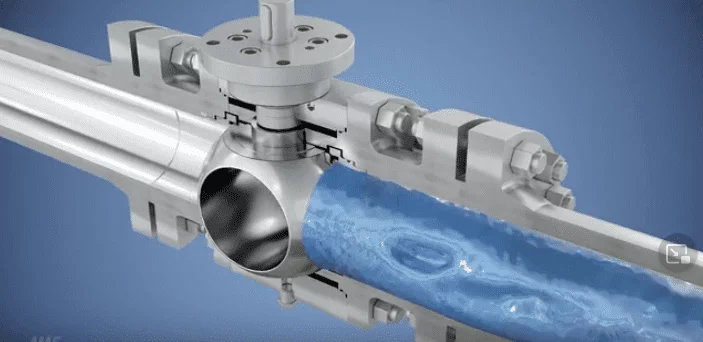Ball valves with integrated drain ports provide an effective way to remove fluids and debris from piping systems. This handy feature brings several key benefits that make ball valves with drains well-suited for applications across various industries.
In this comprehensive guide, as a professional ball valve manufacturer, we’ll explore what ball valves with drains are, why you may want to use them, and the main advantages they offer. We’ll also overview some example applications to give you a sense of when a drainable ball valve makes sense.
By the end, you’ll understand exactly why ball valves with drains can be preferrable over standard ball valves in certain situations.

What Is a Ball Valve With an Integrated Drain?
First, let’s start with what a ball valve with drain actually is.
A ball valve is a type of shut-off valve that uses a rotating ball with a bore to control flow. Ball valves are known for providing reliable shut-off and requiring minimal space.
Ball valve with drain cutaway
A ball valve with integrated drain takes the standard ball valve design but adds a drain port. This extra port tees off the valve outlet and allows users to drain liquids from the valve body and connected piping.
Without a drain, any fluid downstream of a closed ball valve would have no way to exit the pipe. The trapped liquids could freeze, evaporate, stagnate or even damage equipment.
By integrating a drain port into the valve body, ball valves with drains give users an easy way to remove fluids after shutting off the line. The key benefit is avoiding issues caused by trapped liquids in the valve and adjacent piping.
Why Use a Ball Valve with a Drain Port? 3 Key Benefits
Now that you understand what a ball valve with drain is, let’s explore some of the main advantages this type of valve offers.
1. Drain Systems to Prevent Freezing
One of the most common uses for a ball valve with drain is winterizing water systems to prevent freezing pipes.
For example, outdoor hose bibs need to be shut off and drained before winter to avoid freeze damage. By installing a ball valve with drain on the supply line, users can shut off water to the hose bib then open the drain port to remove any trapped water.
Draining the valve body ensures no pockets of water get left behind, eliminating the risk of ice expansion blowouts.
Bottom line: Ball valves with drains provide an all-in-one option for shutting off and draining water systems to prevent wintertime freeze events.
2. Drain Piping for Maintenance
Another useful application for ball valves with drains is draining process lines or equipment to perform maintenance.
For example, cleaning strainer baskets often requires shutting down and draining connected piping. Or consider a heat exchanger that needs to be opened for periodic tube bundle cleaning.
Installing a ball valve with drain on the inlet and outlet allows operators to quickly shut off and drain the exchanger so technicians can safely access the internals.
In summary: Integrating drain ports into ball valves facilitates system drain-downs prior to maintenance activities like equipment cleaning and access.
3. Depressurization Safety
Some ball valves with drains serve a special depressurization function vital for maintaining safety.
For example, pneumatic systems utilize compressed air for power. Before conducting any maintenance, technicians must fully depressurize air lines and reservoirs to mitigate injury risks.
Here, ball valves with vent ports provide the dual capability to shut off and vent pressurized air piping. With the valve closed, the integrated drain port safely depressurizes the system downstream.
The key takeaway: Certain critical applications rely on ball valves with drains to quickly isolate and vent trapped pressure during maintenance — enhancing personnel safety.
Real-World Applications That Use Ball Valves with Drains
Now that you know the core benefits drainable ball valves provide, let’s look at some real-world applications where these valves pull their weight:
Winterizing Outdoor Water Systems
As mentioned already, outdoor hose bibs, irrigation systems and pools use draining ball valves to remove water and prevent weather-related damage.
Compressed Air Venting
Integrating ball valves with vent ports into compressed air manifolds provides technicians a way to safely de-pressurize lines for maintenance activities.
Draining Gas Piping
Some gas systems rely on ball valves with drains to remove liquid accumulations from drip legs or low points along pipe runs.
Process Vessel Drain-Downs
Plants often install drainable ball valves on vessels and tanks to allow full draining prior to entry and cleaning.
Pump & Compressor Oil Drain-Off
Rotating equipment like compressors and pumps may use a ball valve plus drain tapping to drain lube oils with the system off-line.
As you can see, ball valves with integrated drains serve important functions across a diverse range of applications. The capability to quickly drain liquids while isolating flow with a single valve delivers real value.
Key Takeaways on Ball Valves with Drains
To wrap things up, here are the key points to remember:
- Ball valves with drains contain an extra port that allows users to remove downstream liquids after closing the valve.
- Key benefits include winterizing water systems, depressurizing air lines safely, and draining process equipment for maintenance.
- Applications range from winterizing hose bibs to draining vessels at industrial plants to venting compressed air systems.
- By integrating a drain port into a standard ball valve, these valves save space and provide an all-in-one way to stop flow and drain systems.
So in summary, ball valves with integrated drain ports offer a convenient way to isolate, shut off, and drain piping systems with a single valve. The handy drain feature brings important benefits across a diverse range of residential, commercial and industrial applications.
Hopefully this guide gave you a helpful introduction to ball valves with drains — when and why they are used. Thanks for reading! Please leave any questions below.












